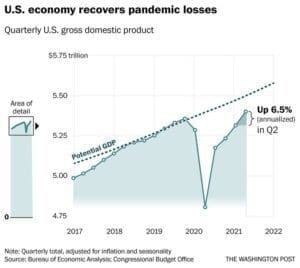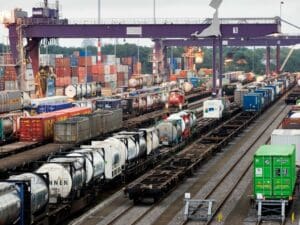 The big news in the Olympics this week is that Simone Biles withdrew from the all around gymnastics competition. Biles is the best gymnast the world has seen. She is a four-time gold medalist, reigning world champion, and has four different skills named after her! She still has moves that she can do that no one else in the world can. She, and other gymnasts, had suffered abuse from a doctor protected by the American Olympics officials, but preserved and won anyway. Simon Biles remains, and will always be, a champion. Her name will live on in the sport’s history!
The big news in the Olympics this week is that Simone Biles withdrew from the all around gymnastics competition. Biles is the best gymnast the world has seen. She is a four-time gold medalist, reigning world champion, and has four different skills named after her! She still has moves that she can do that no one else in the world can. She, and other gymnasts, had suffered abuse from a doctor protected by the American Olympics officials, but preserved and won anyway. Simon Biles remains, and will always be, a champion. Her name will live on in the sport’s history!
- US Economy Grows Briskly, But Inflation Remains a Concern
- Vaccinated People in High Transmission Areas are Urged to Wear Masks
- Warehouses Need Workers and are Stealing them from Other Sectors
- A Slimmed Down Infrastructure Bill Advances
- Semiconductor Shortage is Expected to Last through 2023
- US Rail Customers are Overpaying because of Dwindling Competition
 The US economy grew at an annual rate of 6.5 percent in the quarter ending in June. For the first time since the pandemic took hold, economic output eclipsed its pre-pandemic high, after adjusting for inflation. Meanwhile, consumer prices rose 5.4 percent in June, their fastest pace in 13 years. Federal Reserve Chairman Jerome Powell said that inflation could be more aggressive and last longer than current central bank expectations. “As the reopening continues, bottlenecks, hiring difficulties, and other constraints could continue to limit how quickly supply can adjust, raising the possibility that inflation could turn out to be higher and more persistent than we expect,” Powell said during a news conference. Getting a better grasp on demand and inflation, which have both been volatile, complicates the integrated business planning process.
The US economy grew at an annual rate of 6.5 percent in the quarter ending in June. For the first time since the pandemic took hold, economic output eclipsed its pre-pandemic high, after adjusting for inflation. Meanwhile, consumer prices rose 5.4 percent in June, their fastest pace in 13 years. Federal Reserve Chairman Jerome Powell said that inflation could be more aggressive and last longer than current central bank expectations. “As the reopening continues, bottlenecks, hiring difficulties, and other constraints could continue to limit how quickly supply can adjust, raising the possibility that inflation could turn out to be higher and more persistent than we expect,” Powell said during a news conference. Getting a better grasp on demand and inflation, which have both been volatile, complicates the integrated business planning process.
 On Tuesday, the Centers for Disease Control (CDC) and Prevention said fully vaccinated people who are in areas with high or substantial COVID-19 transmission levels should wear masks in indoor public settings. Will that make it harder for companies to hire warehouse and factory workers? Will this begin to affect demand in retail and hospitality? We can only speculate on these issues. Disappointingly, the CDC is basing this recommendation on unpublished data. Some outside scientists are not at all convinced that this is a sensible recommendation; they want to see the data.
On Tuesday, the Centers for Disease Control (CDC) and Prevention said fully vaccinated people who are in areas with high or substantial COVID-19 transmission levels should wear masks in indoor public settings. Will that make it harder for companies to hire warehouse and factory workers? Will this begin to affect demand in retail and hospitality? We can only speculate on these issues. Disappointingly, the CDC is basing this recommendation on unpublished data. Some outside scientists are not at all convinced that this is a sensible recommendation; they want to see the data.
 Newmark, the large commercial real estate firm, put out a report on warehouse labor in the US. In the second quarter of 2021, a record 423.7M square feet of industrial space was under construction across the nation. Over 282,000 additional workers could be needed to support activities within these industrial facilities. Approximately 50% of employees making the switch to the logistics sector -warehousing and transportation – previously worked in the retail/wholesale and administrative/support services. This flow is likely to accelerate. Wages grew by 4.25% from January to June 2021 in logistics, a record 6-month gain for the sector.
Newmark, the large commercial real estate firm, put out a report on warehouse labor in the US. In the second quarter of 2021, a record 423.7M square feet of industrial space was under construction across the nation. Over 282,000 additional workers could be needed to support activities within these industrial facilities. Approximately 50% of employees making the switch to the logistics sector -warehousing and transportation – previously worked in the retail/wholesale and administrative/support services. This flow is likely to accelerate. Wages grew by 4.25% from January to June 2021 in logistics, a record 6-month gain for the sector.
 A group of Senate Republicans and the White House announced Wednesday that they had reached an agreement on a $1 trillion bipartisan infrastructure package. The bill includes $550 billion in new spending for public transit, clean energy, electric vehicles, and roads and bridges. Line items that impact freight logistics include $40 billion for bridge repairs and replacements, $25 billion for airports, $17 billion in ports, $11 billion toward transportation safety programs with an emphasis on pedestrians and cyclists, $7.5 billion to create a network of electric vehicle chargers across the country, $5 billion in rail improvement grants. The final text of the bill is yet to be written, and it still needs to pass both chambers of Congress. This is far from a done deal, House progressives object that the bill is too small and many Senate Republicans object that there are not enough details about what is in the bill and how it will be paid for.
A group of Senate Republicans and the White House announced Wednesday that they had reached an agreement on a $1 trillion bipartisan infrastructure package. The bill includes $550 billion in new spending for public transit, clean energy, electric vehicles, and roads and bridges. Line items that impact freight logistics include $40 billion for bridge repairs and replacements, $25 billion for airports, $17 billion in ports, $11 billion toward transportation safety programs with an emphasis on pedestrians and cyclists, $7.5 billion to create a network of electric vehicle chargers across the country, $5 billion in rail improvement grants. The final text of the bill is yet to be written, and it still needs to pass both chambers of Congress. This is far from a done deal, House progressives object that the bill is too small and many Senate Republicans object that there are not enough details about what is in the bill and how it will be paid for.
![]() The worldwide shortage of semiconductors is expected to last through the first quarter of 2023 at a minimum according to the electronics supply chain analysis firm Supplyframe. Computer chips are in short supply as semiconductor production and testing have been hampered by a water shortage and Covid-19 outbreaks in Taiwan, where nearly half of the world’s semiconductors are manufactured. Buffer inventory has now been committed, which means companies production is impacted if they cannot get new supply. However, the new average lead times are, in some cases, up to 60 weeks.
The worldwide shortage of semiconductors is expected to last through the first quarter of 2023 at a minimum according to the electronics supply chain analysis firm Supplyframe. Computer chips are in short supply as semiconductor production and testing have been hampered by a water shortage and Covid-19 outbreaks in Taiwan, where nearly half of the world’s semiconductors are manufactured. Buffer inventory has now been committed, which means companies production is impacted if they cannot get new supply. However, the new average lead times are, in some cases, up to 60 weeks.
 The Rail Customer Coalition hired Escalation Consultants to analyze the change in railroad pricing practices using the last fifteen years of available data. The analysis revealed there has been a dramatic increase in the share of revenue the largest railroads (Class I railroads) obtain from customer’s rates considered non-competitive by the Surface Transportation Board (STB). The determination of whether movements are considered potentially non-competitive or competitive in the analysis is based on a STB calculation based on a Class 1’s rail movements. Revenue from non-competitive moves increased 230%, while revenue from movements on competitive lanes increased only 24%.
The Rail Customer Coalition hired Escalation Consultants to analyze the change in railroad pricing practices using the last fifteen years of available data. The analysis revealed there has been a dramatic increase in the share of revenue the largest railroads (Class I railroads) obtain from customer’s rates considered non-competitive by the Surface Transportation Board (STB). The determination of whether movements are considered potentially non-competitive or competitive in the analysis is based on a STB calculation based on a Class 1’s rail movements. Revenue from non-competitive moves increased 230%, while revenue from movements on competitive lanes increased only 24%.
That’s all for this week. Enjoy the weekend and the song of the week, Queen’s We are the Champions.

















